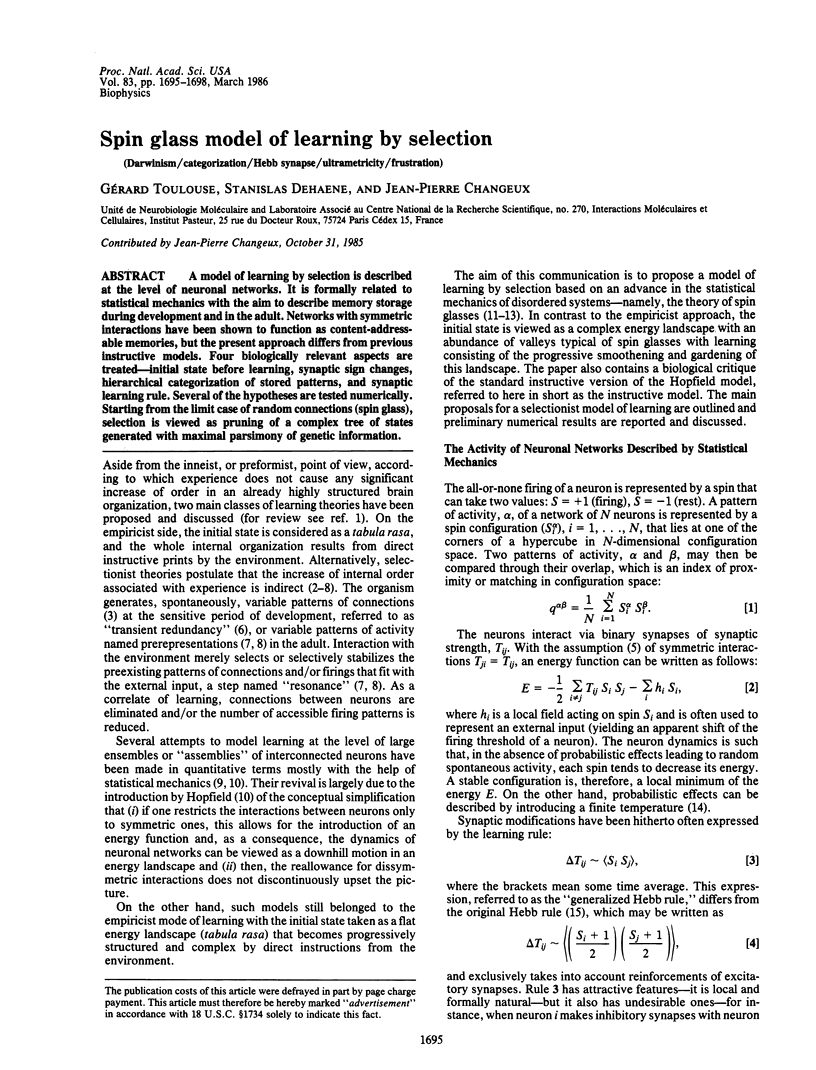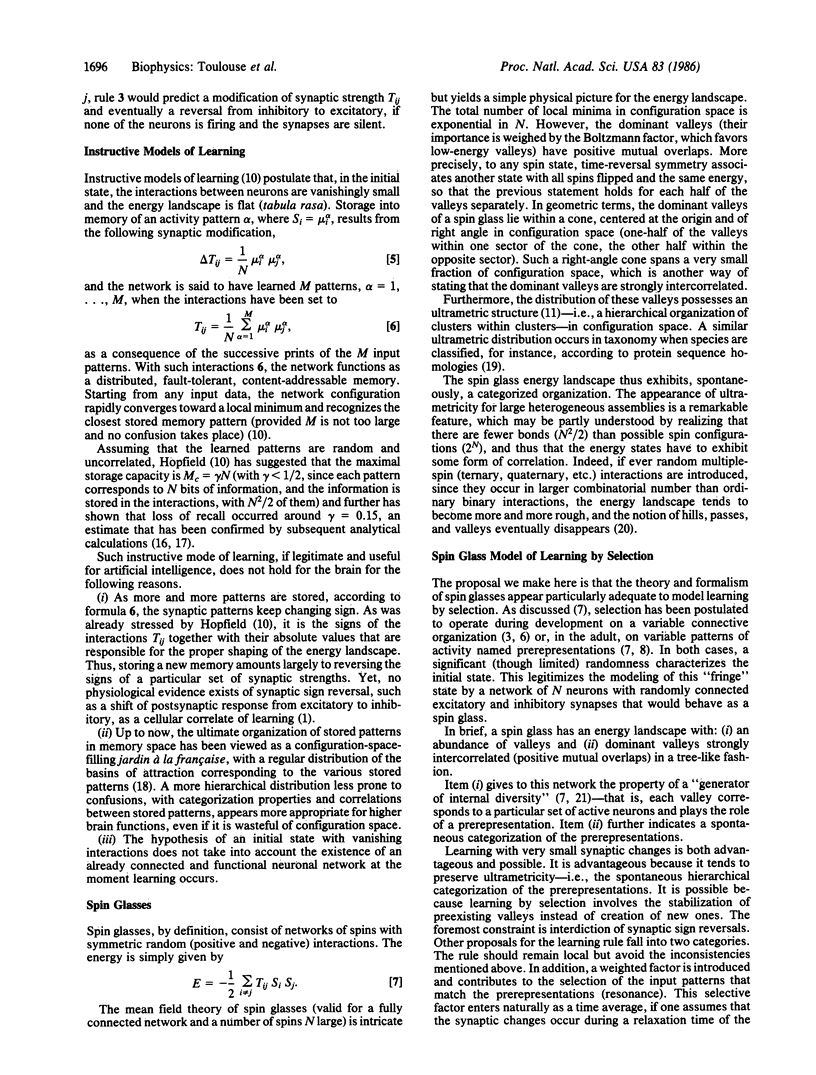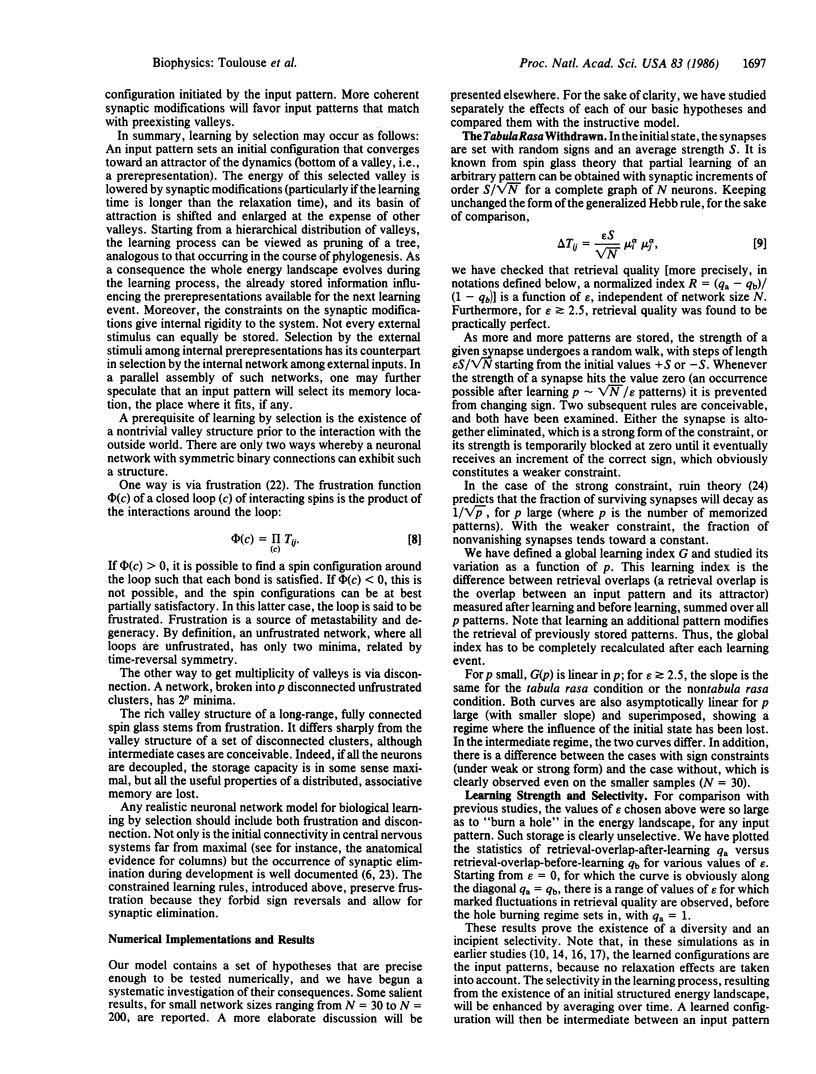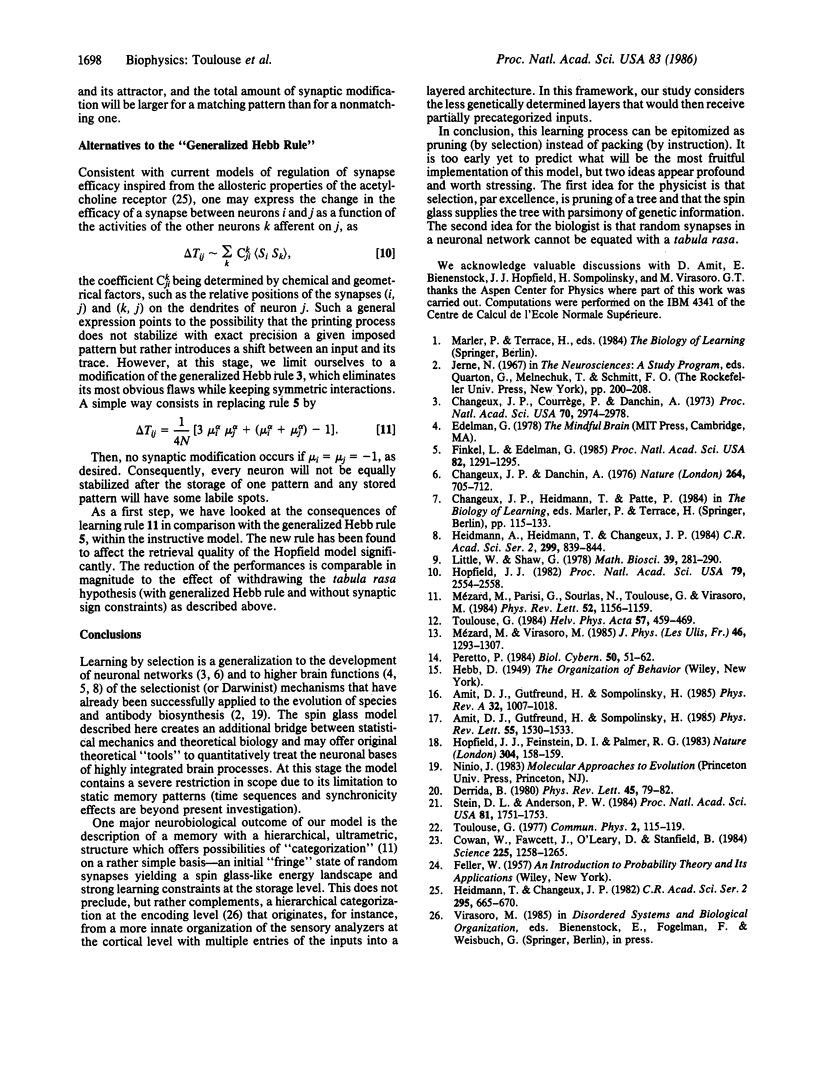Abstract
A model of learning by selection is described at the level of neuronal networks. It is formally related to statistical mechanics with the aim to describe memory storage during development and in the adult. Networks with symmetric interactions have been shown to function as content-addressable memories, but the present approach differs from previous instructive models. Four biologically relevant aspects are treated--initial state before learning, synaptic sign changes, hierarchical categorization of stored patterns, and synaptic learning rule. Several of the hypotheses are tested numerically. Starting from the limit case of random connections (spin glass), selection is viewed as pruning of a complex tree of states generated with maximal parsimony of genetic information.
Full text
PDF



Selected References
These references are in PubMed. This may not be the complete list of references from this article.
- Amit DJ, Gutfreund H, Sompolinsky H. Spin-glass models of neural networks. Phys Rev A Gen Phys. 1985 Aug;32(2):1007–1018. doi: 10.1103/physreva.32.1007. [DOI] [PubMed] [Google Scholar]
- Amit DJ, Gutfreund H, Sompolinsky H. Storing infinite numbers of patterns in a spin-glass model of neural networks. Phys Rev Lett. 1985 Sep 30;55(14):1530–1533. doi: 10.1103/PhysRevLett.55.1530. [DOI] [PubMed] [Google Scholar]
- Changeux J. P., Courrège P., Danchin A. A theory of the epigenesis of neuronal networks by selective stabilization of synapses. Proc Natl Acad Sci U S A. 1973 Oct;70(10):2974–2978. doi: 10.1073/pnas.70.10.2974. [DOI] [PMC free article] [PubMed] [Google Scholar]
- Changeux J. P., Danchin A. Selective stabilisation of developing synapses as a mechanism for the specification of neuronal networks. Nature. 1976 Dec 23;264(5588):705–712. doi: 10.1038/264705a0. [DOI] [PubMed] [Google Scholar]
- Cowan W. M., Fawcett J. W., O'Leary D. D., Stanfield B. B. Regressive events in neurogenesis. Science. 1984 Sep 21;225(4668):1258–1265. doi: 10.1126/science.6474175. [DOI] [PubMed] [Google Scholar]
- Finkel L. H., Edelman G. M. Interaction of synaptic modification rules within populations of neurons. Proc Natl Acad Sci U S A. 1985 Feb;82(4):1291–1295. doi: 10.1073/pnas.82.4.1291. [DOI] [PMC free article] [PubMed] [Google Scholar]
- Heidmann A., Heidmann T., Changeux J. P. Stabilisation sélective de représentations neuronales par résonance entre "préreprésentations" spontanées du réseau cérébral et "percepts" évoqués par interaction avec le monde extérieur. C R Acad Sci III. 1984;299(20):839–844. [PubMed] [Google Scholar]
- Heidmann T., Changeux J. P. Un modèle moléculaire de régulation d'efficacité au niveau postsynaptique d'une synapse chimique. C R Seances Acad Sci III. 1982 Dec 6;295(12):665–670. [PubMed] [Google Scholar]
- Hopfield J. J., Feinstein D. I., Palmer R. G. 'Unlearning' has a stabilizing effect in collective memories. Nature. 1983 Jul 14;304(5922):158–159. doi: 10.1038/304158a0. [DOI] [PubMed] [Google Scholar]
- Hopfield J. J. Neural networks and physical systems with emergent collective computational abilities. Proc Natl Acad Sci U S A. 1982 Apr;79(8):2554–2558. doi: 10.1073/pnas.79.8.2554. [DOI] [PMC free article] [PubMed] [Google Scholar]
- Peretto P. Collective properties of neural networks: a statistical physics approach. Biol Cybern. 1984;50(1):51–62. doi: 10.1007/BF00317939. [DOI] [PubMed] [Google Scholar]
- Stein D. L., Anderson P. W. A model for the origin of biological catalysis. Proc Natl Acad Sci U S A. 1984 Mar;81(6):1751–1753. doi: 10.1073/pnas.81.6.1751. [DOI] [PMC free article] [PubMed] [Google Scholar]


